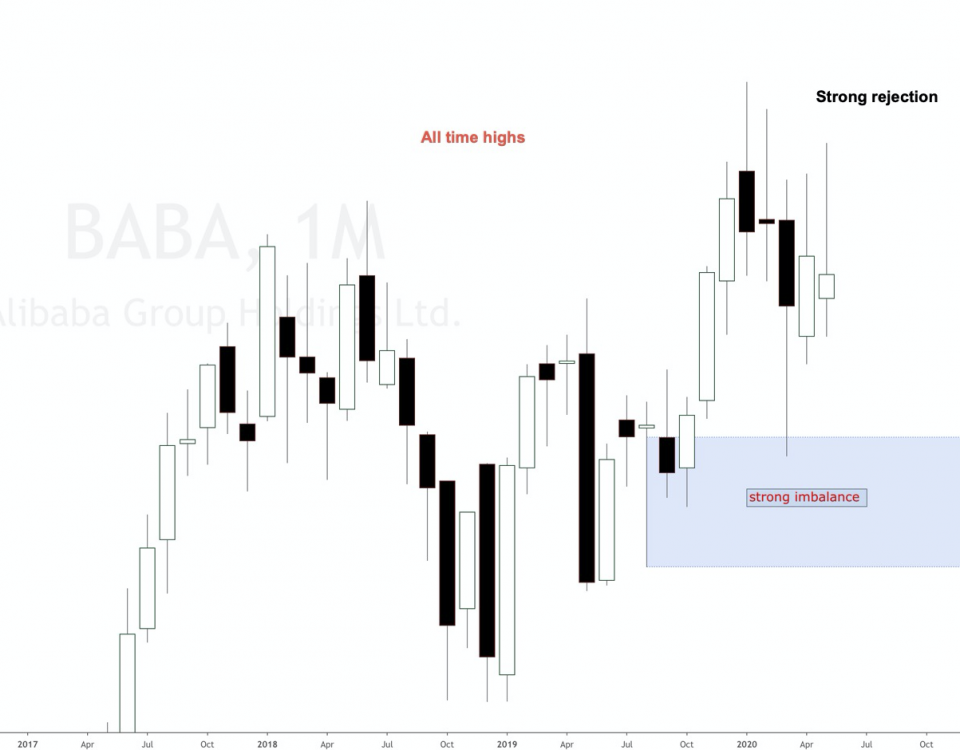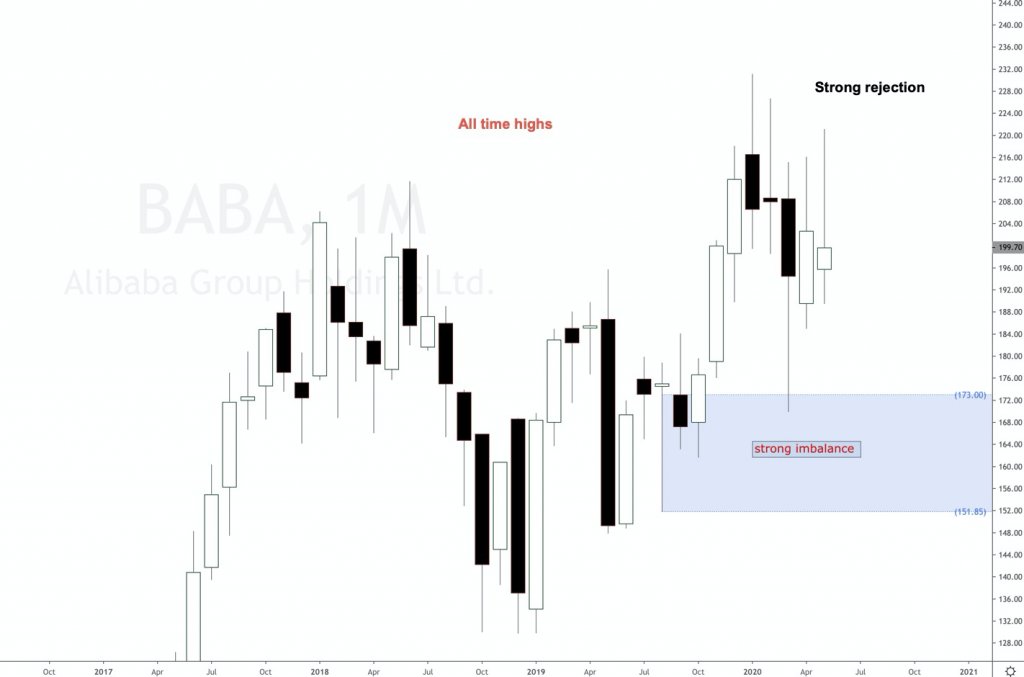25 May 2020

Alibaba Group Holding Limited, through its subsidiaries, provides online and mobile commerce businesses in the People’s Republic of China and internationally. It operates in four segments: Core Commerce, Cloud Computing, Digital Media and Entertainment.
Alibaba stock scenario
Chinese e-commerce Alibaba may not qualify as an archetypal blue-chip stock, but at half a trillion dollars and growing, it’s earned significant global respect and long-term staying power. Alibaba is one of the largest companies in the world’s hottest major market – even after the 2020’s pandemic – Alibaba arguably enjoys better long-term growth prospects than Amazon.com and yet trades at a much smaller price.
Alibaba Group Earnings
Its cloud business, though just 7% of the company, has grown more than 50% last quarter and still has much potential. Alibaba (NYSE: BABA) has weathered the trade war between the United States and China pretty well, as seen in the monthly timeframe analysis below. It has also weathered the famous curveball of the pandemic beautifully, proving its resilience in the most uncertain of times.
BABA price chart
Why hasn’t it dropped further than many other stocks worldwide? There was a very strong monthly demand imbalance, located around $173. It took control after the pandemic started to shatter the world markets, and BABA has been rallying since it touched that price level last March 2020. See Alibaba Group’s monthly timeframe analysis and forecast below.

There is a clear uptrend and bullish bias on Alibaba Group stock with that strong imbalance in control. However, some short opportunities for stock intraday traders are being created after hitting all-time highs again around $232 per share. We can see wide upper wicks telling us there is selling pressure; thus, going long right now is not a good idea.
Alibaba stock trend
You can use these imbalances to plan your trades in lower timeframes. Trading is just waiting for the right trigger points and scenarios to present themselves, this game has got a name and it’s called the waiting game. We need to patiently wait for the correct scenarios and setups to happen and wait for the price to pull back or dip into the price levels we want to trade, in our case, these price levels are made of supply and demand imbalances.
Join our supply and demand stock trading course to learn how to trade using our supply and demand trading strategy.
There are several ways of buying stocks and futures. When trading stocks, you can buy shares of the underlying stock or use options strategies to go long or short at these specific supply and demand levels, long calls or long puts or spreads. You can even buy Alibaba BABA CFD (contracts for difference) if you are in a country where it’s allowed.









